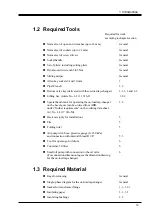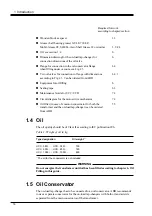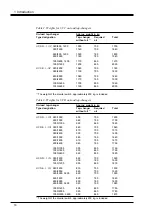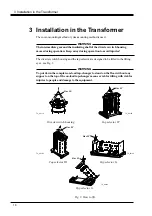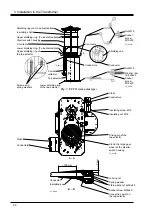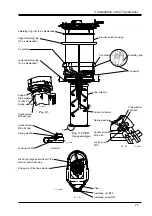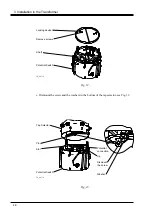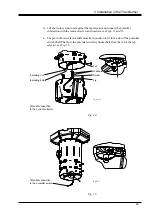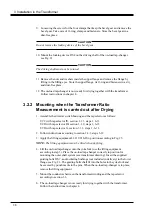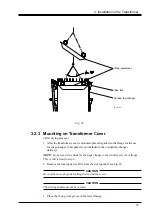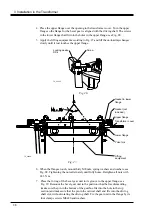
24
3 Installation in the Transformer
8. Remove the transport locking and the lifting eyes with fasteners from the top
section of the tap selector, see Fig. 8.
CAUTION
Do not operate the tap selector until it is connected to the diverter switch housing.
Screw (to be removed)
Transport locking
(to be removed)
TC_00216
Lifting eyes with
fasteners
(to be removed)
Fig. 8.
9. Lift the diverter switch housing in position and fit the tap selector to the diverter
switch housing, see Fig. 4. The tap selector driving pin shall fit into the large gear
wheel slot, see Fig. 9, A-A.
CAUTION
The driving crank on the tap selector must not be moved more than slightly to engage
the slot in the large gear wheel of the diverter switch housing.
10. Insert four M10x40 screws and washers, see Fig. 10, through the tap selector
upper part to the four supports of the diverter switch housing. Tighten the screws.
WARNING
The diverter switch housing and the tap selector contains moving parts. Be
cautious!
11. Connect the supplied conductors between the diverter switch housing and tap
selector, see Fig. 9. The conductor ends and their connecting points have the
same markings. Fasten the conductors with cleats, see Fig. 9, A-A. The number
of conductors is varying depending on the rated through current and the type of
connection.
12. If the impulse withstand voltage to earth exceeds 380 kV, insulate the connections
on the tap selector by winding paper around them to a thickness of
approximately 3 mm, see Fig. 7, B-B. The paper shall be of the same quality as
used for insulation of conductors within the active part of the transformer.
13. If the impulse withstand voltage to earth exceeds 380 kV, mount the supplied
shielding ring (DS10) at the bottom plate of the tap selector, see Fig. 9, detail D.
CAUTION
After mounting the shielding ring, the on-load tap-changer must
not
stand on the
shielding ring.
14. Continue with section 3.3.




